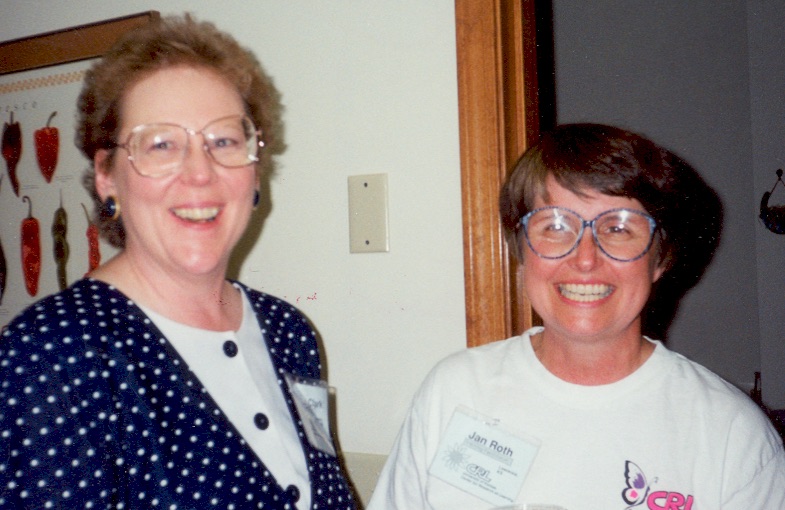SIM Professional Development Network History
The SIM Professional Development Network

SIM StoryCorps

History of the Network
 Fran Clark, who nurtured the early growth of the network, remembers the hunger for knowledge among practitioners in the learning disabilities field that led to the creation of the SIM Network. People were reading about the work of what was then the Institute for Research in Learning Disabilities. Word was getting out. “They were calling. They were wanting things,” Fran said. “They would ask us to speak at conferences and want more. It was a relentless pushing and pulling from the field, sometimes faster than we wanted. “We couldn't do it at all. We just physically couldn't go everywhere we needed. People wanted things faster. People wanted to build those networks—California, and Iowa, and then Florida, and Arkansas on the heels of that. They were wanting to get going quickly in their states. There was no way that we could do all of that, so we had to build the resources.”
Fran Clark, who nurtured the early growth of the network, remembers the hunger for knowledge among practitioners in the learning disabilities field that led to the creation of the SIM Network. People were reading about the work of what was then the Institute for Research in Learning Disabilities. Word was getting out. “They were calling. They were wanting things,” Fran said. “They would ask us to speak at conferences and want more. It was a relentless pushing and pulling from the field, sometimes faster than we wanted. “We couldn't do it at all. We just physically couldn't go everywhere we needed. People wanted things faster. People wanted to build those networks—California, and Iowa, and then Florida, and Arkansas on the heels of that. They were wanting to get going quickly in their states. There was no way that we could do all of that, so we had to build the resources.”
From discussions about how to meet that need, the fledgling SIM Network emerged. In 1983, a group of 15 professionals made a commitment to work together to put validated instructional methods in the hands of teachers. Planning meetings typically involved small groups of interested individuals. “We were up in this little room way up in the top of the union,” Fran said of one early meeting. “Participants were mostly people who had either been doctoral students and who had worked with the kinds of concepts that Don (Deshler) was including in his courses, or they were people who had worked with developing some of the strategies and field testing them. “At that point, there were people who were interested in bringing strategies to places, but there was no formal title of strategies trainer.
“It's really been something to see the size of the group grow and to see it expand. We were just very few in the beginning. As more states were interested and we began to build those projects, the numbers began to grow pretty rapidly.” To bolster the capacity of the new network, IRLD began offering “potential trainer” workshops in 1986. With the growth of the network came a new need: Ways to support the work of network members and keep them up-to-date on new research findings and products. “We started holding training meetings initially at conferences where many of our people would be attending anyway,” Fran said. “I think the first one was at CEC in Chicago. “We were expecting 70 or 80 people, and of course I had made the room reservation long distance. We get there and it’s a room that is long and narrow, set up theater style. “The three people who went to lunch with me can tell you that I was distraught because that wasn't the kind of environment we wanted for the meeting. We worked that through and reset the room. But they remember. I was quite distraught at lunch.
“As the years went on, we decided that was difficult to do because it took our group away from the conference. Then, we started doing the meetings here in Lawrence in the summer because a lot of people from other states wanted to come to Lawrence. They wanted to see Lawrence, and they wanted to see the institute—when it was only offices to see. “One year, when we had a big meeting, we sent somebody to KC to bring back barbecue for everybody for lunch. The halls smelled like barbecue for weeks after that.”
Despite some missteps and false starts in those early days, the dedicated educators who are members of the SIM network persevered. “We saw a lot of changes occur over time,” Fran said. “It's really interesting to sit back and look as other people talk about doing training for other programs. “I think the concept of the training network is what has really helped SIM expand. If we had only relied on the staff at the center to do the training and to spread the word, there's no way that we could have had the impact that the trainers in the field have had. “The development of the model itself couldn't have happened without those people because they have contributed ideas, they have asked the tough questions that drove the research and the building of the network.
“We've been able to draw to the Center a group of people with extremely strong commitments from out in the field and from all over the country. I think that's probably the greatest strength. It truly has been an inclusive model in terms of research and involving people in the field in the research just as we talk about involving students with exceptionalities in the general education program.”